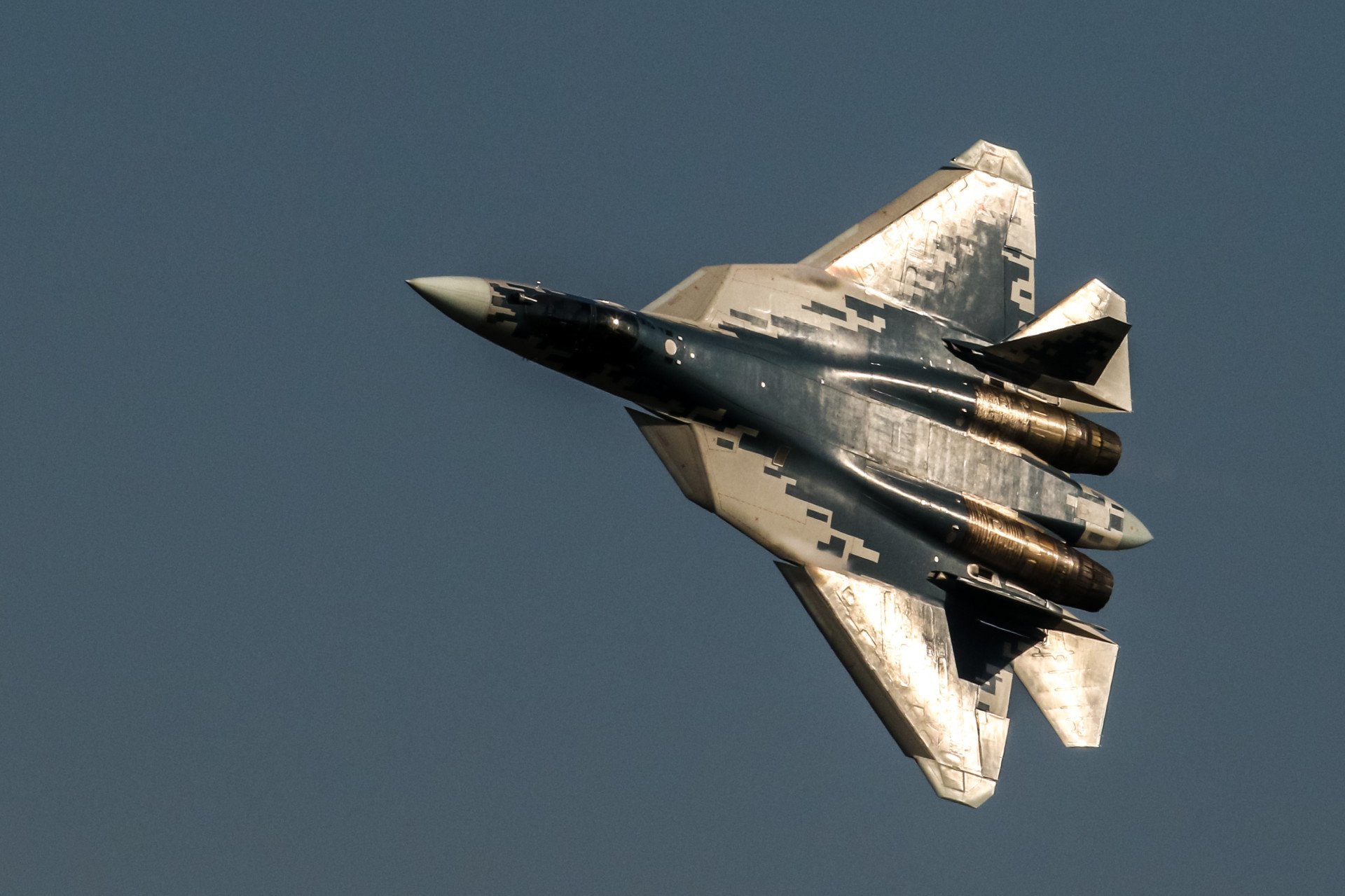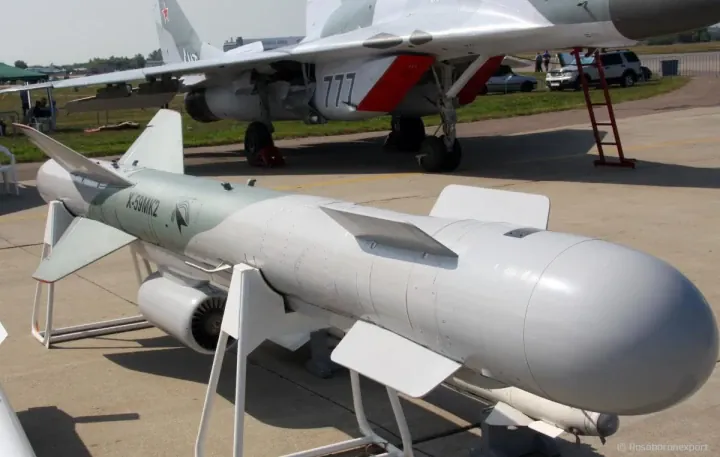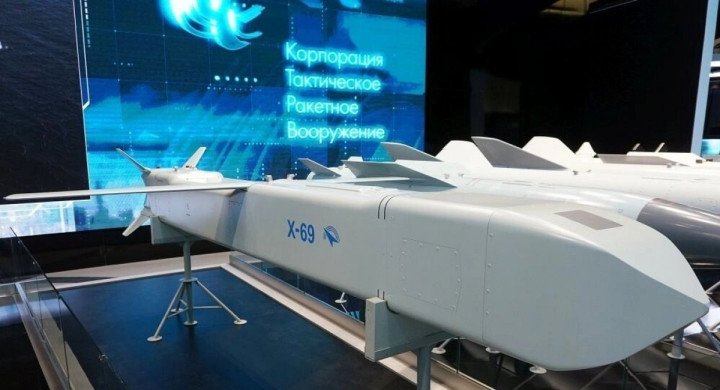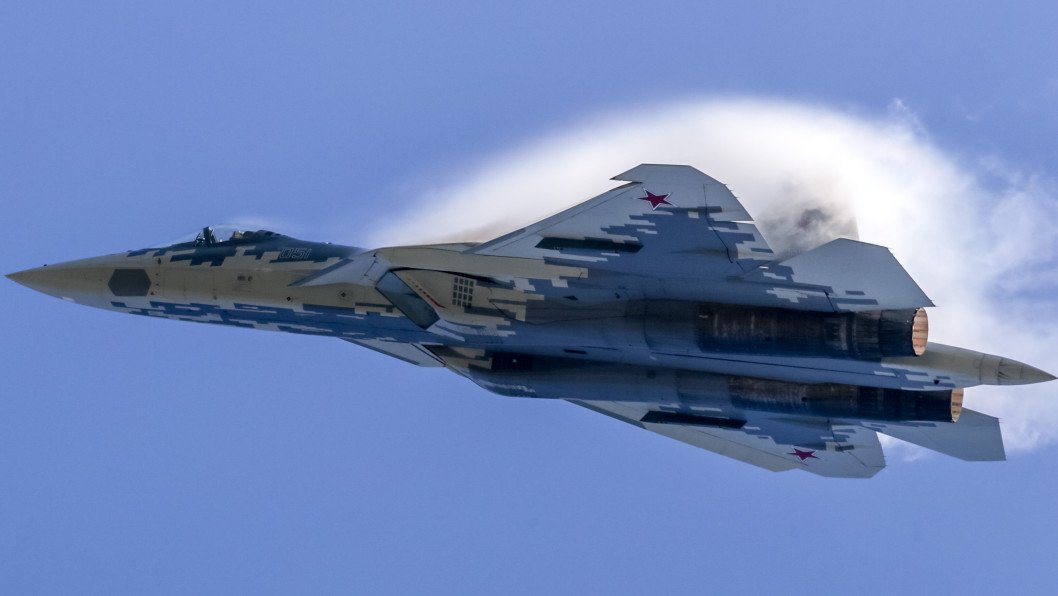- Category
- Latest news
How Russia Undermines Su-57’s Key Advantage by Relying on Outdated Missiles

Russia’s Su-57, promoted as a fifth-generation fighter jet, is encountering serious operational issues due to its reliance on outdated Kh-59 missiles, which enhance radar visibility and make it easier for Ukraine to detect and potentially intercept.
Despite being designed to carry advanced weaponry and maintain low radar visibility—its primary advantage—Su-57 jets have recently been spotted armed with older Kh-59 missiles. This choice undermines the aircraft’s stealth capabilities, as these missiles are typically carried on external pylons, increasing the jet’s radar signature and making it more vulnerable to detection, according to Defense Express.

The Kh-59 Ovod, with a range of around 300 km, has been in use by Russian forces since the start of the war in Ukraine. However, mounting these missiles on the Su-57’s external pylons increases the aircraft’s radar cross-section, effectively negating its supposed stealth advantage.
The Su-57 was specifically designed to carry the newer Kh-69 missiles internally, preserving its radar-evading profile.
Kh-69 missiles specifically designed for Su-57 stealth
To preserve the Su-57’s stealth features, Russia developed the Kh-69 missile specifically for the aircraft. The Kh-69 is designed to fit within the internal weapons bay of the Su-57, maintaining its low radar signature. The missile weighs up to 800 kg, with a warhead of approximately 310 kg, and has a range of over 400 km.
It and has been in use by Russian forces since at least the winter of 2023-24. It has been used in various strikes on Ukraine, including an attack on the Trypilska Thermal Power Plant in April 2024.

Despite its potential, the Kh-69 is in short supply. Estimates suggest that as of May 2024, Russia was producing just 1-3 units per month, with an existing stockpile of around 45 missiles. With a fleet of only 12-15 Su-57s, including prototypes, this production rate is insufficient to meet the needs of even the small number of operational jets, which may realistically number just 4-6.
Notably, on October 19, Ukrainian air defenses shot down a Kh-69 with a new cluster warhead configuration, marking the first recorded use of this variant.
Su-57’s stealth compromised
The footage of the Su-57 carrying Kh-59 missiles instead of the newer Kh-69 exemplifies a broader issue within Russia’s military capabilities.
🚨Rus Su-57 savaş uçağı, iki adet Kh-59 seyir füzesiyle uçarken görüntülendi. pic.twitter.com/gcz06CqFmU
— Clash Report TR (@ClashReporttr) October 20, 2024
The reliance on older, external-mounted missiles not only diminishes the aircraft’s stealth but also undermines the rationale for deploying the Su-57 in the first place. Without sufficient specialized weaponry, the jet is reduced to the level of earlier-generation fighters like the Su-30 and Su-35, which lack advanced stealth capabilities.
Recent reports indicate that Su-57 production relies heavily on Western components, including high-tech electronics and materials, which are subject to sanctions imposed by the international community.





-72b63a4e0c8c475ad81fe3eed3f63729.jpeg)


